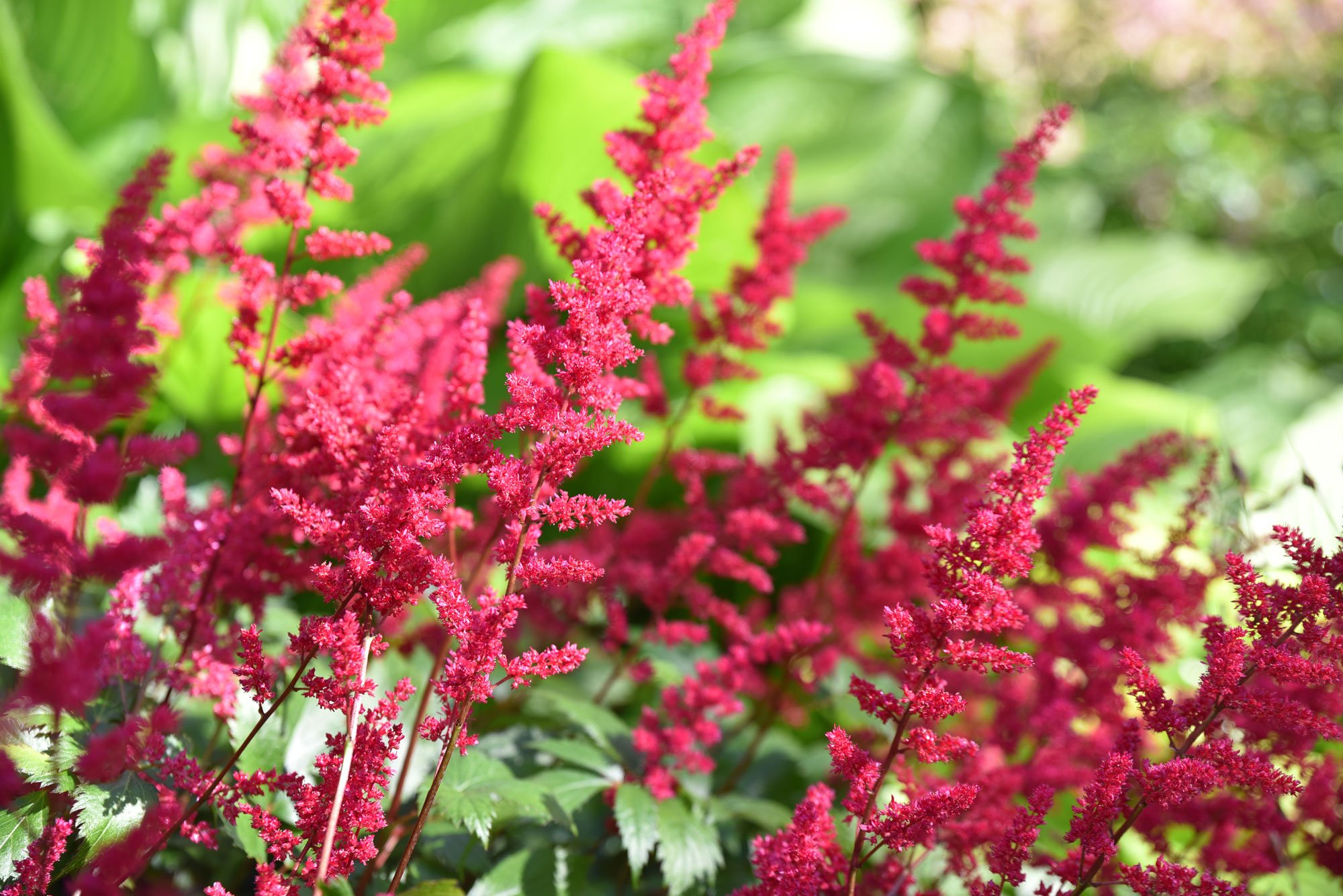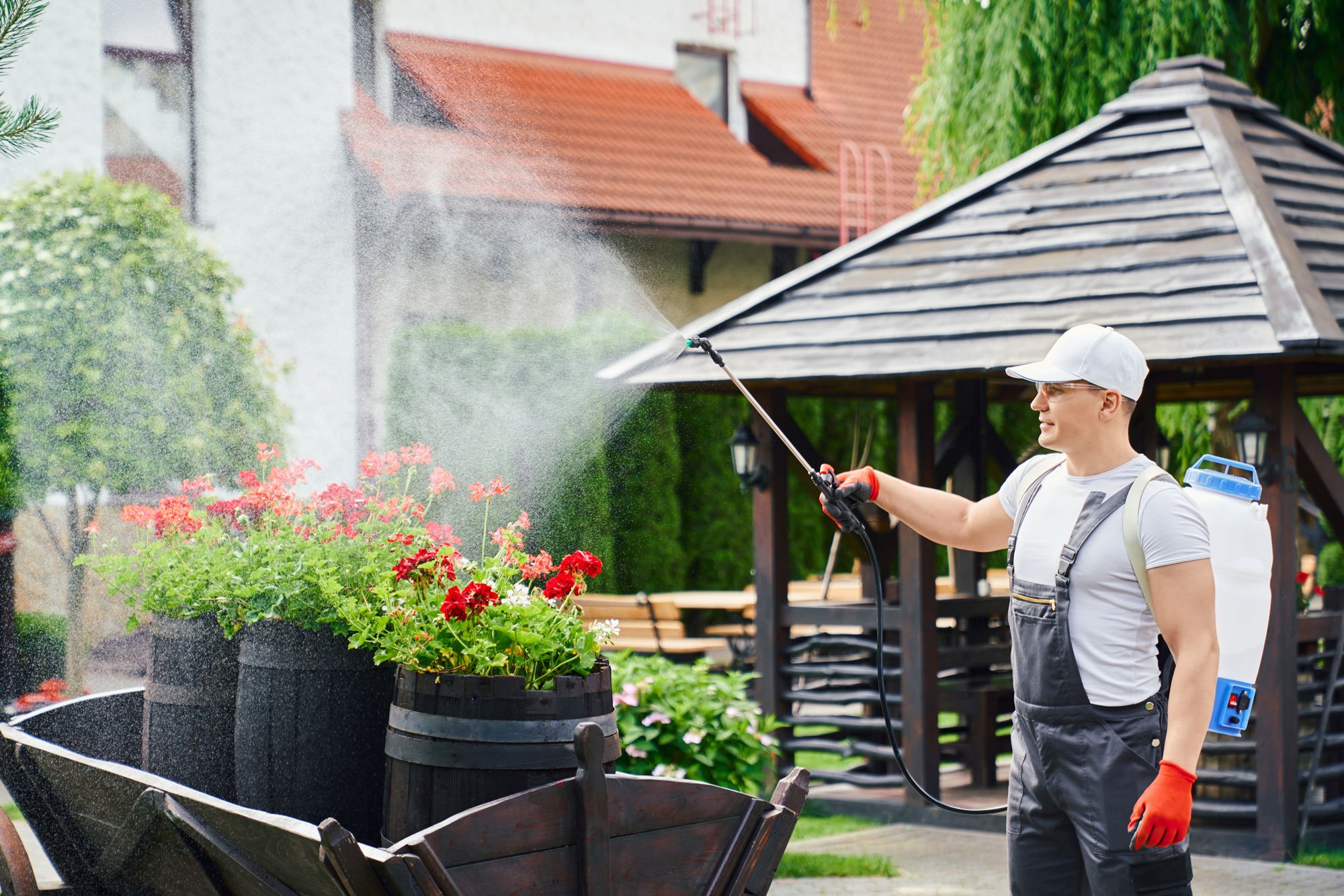Keep Deer Away From Your Minnesota Gardens - Deer Resistant Options
If you live in Minnesota and want to create a beautiful garden with annuals, perennials, trees and shrubs, one of the challenges you may face is deer browsing on your plants. Deer can wreak havoc on garden beds, munching on your favorite flowers and decimating your hard work. Depending on the population of deer, food in the area, and other environmental stresses; no plant is completely safe. However, there are several perennials, annuals, trees, shrubs, and other plants that deer tend to avoid due to their unpalatable nature or strong scent. In this article, we will explore some of these deer-resistant plants that are suitable for gardens in Minnesota.
Astilbe is a great flowering perennial that deer typically avoid.
Deer Resistant Perennials in Minnesota
Deer typically tend to stay away from these perennials:
Achillea (Yarrow)
Actaea (Snakeroot)
Agastache (Hyssop)
Alchemilla (Lady’s Mantle)
Allium (Ornamental onion)
Amsonia (Blue Star)
Aquilegia (Columbine)
Aralia (Spikenard)
Artemisia (Silver Mound)
Asclepias (Butterfly Weed)
Aster
Astilbe
Baptisia (False Indigo)
Brunnera (False Forget-me-not)
Campanula (Bellflower)
Chelone (Turtlehead)
Chrysanthemum (Garden Mum)
Coreopsis (Tickseed)
Dianthus (Carnation)
Dicentra (Bleeding Heart)
Epimedium (Barrenwort)
Eupatorium (Joe Pye Weed)
Ferns
Gaillardia (Blanket Flower)
Helenium (Sneezeweed)
Heuchera (Coral Bells)
Iris
Leucanthemum (Daisy)
Liatris (Gay Feather)
Ligularia (Leopard Plant)
Lobelia (Cardinal Flower)
Lupinus (Lupine)
Monarda (Bee Balm)
Nepeta (Catmint)
Perovskia (Russian Sage)
Physostegia (Obedient Plant)
Platycodon (Balloon Flower)
Polygonatum (Solomon’s Seal)
Pulmonaria (Lungwort)
Rudbeckia (Black-eyed-susan)
Salvia (Sage)
Sedum (Stonecrop)
Solidago (Goldenrod)
Stachys (Wooly Lamb’s Ear)
Tiarella (Foam Flower)
Veronica (Speedwell)
Yucca (Adam’s Needle)
Snapdragons are a great annual to plant that deer typically avoid.
Deer Resistant Annuals in Minnesota
Deer typically tend to stay away from these annuals:
Ageratum
Alyssum
Amaranth
Castor Bean
Cleome
Cosmos
Dusty Miller
Marigold
Nirembergia
Ornamental Pepper
Salvia
Snapdragon
Wax Begonia
Zinnia
Forsythia shrubs are a great option that deer typically avoid.
Deer Resistant Shrubs in Minnesota
Deer typically stay away from these shrubs:
Barberry
Boxwood
Clethra
Cotoneaster
Currant
Forsythia
Elderberry
Falsespirea (Sorbaria)
Holly varieties
Honeysuckle
Hypericum
Lilac
Peashrub
Potentilla
Rhododendron
Smokebush
Snowberry
Spirea
Stephanandra
Weigela
Viburnum
Creeping phlox is a great option for a flowering ground cover in the garden that deer typically avoid.
Deer Resistant Ground Cover Plants in Minnesota
Deer typically tend to avoid these ground cover plants:
Ajuga (Bugleweed)
Asarum (Ginger)
Lamium (Dead Nettle)
Sub Phlox (Creeping Phlox)
Sedum (Stonecrop)
Sempervivum (Hen & Chicks)
Thymus (Creeping Thyme)
Vinca (Periwinkle)
Clematis is a great option for a vining plant that deer typically avoid.
Deer Resistant Vines in Minnesota
Deer typically tend to stay away from these vines:
Bittersweet
Boston Ivy
Clematis
Engleman Ivy
Honeysuckle Vine
Trumpet Vine
Virginia Creeper
A Hawthorn Tree is a great option that produces beautiful flowers that deer typically stay away from all year long.
Deer Resistant Trees in Minnesota
Deer typically tend to avoid these trees:
Birch (River & Paper)
Box Elder
Hawthorn
Honeylocust
Maple
Northern Catalpa
Oak
Showy Mountain Ash
Serviceberry
Pine Trees are great evergreens that deer typically avoid.
Deer Resistant Evergreens In Minnesota
Deer typically tend to stay away from these evergreens:
Junipers
Pine (Mugho, Austrian, Scotch)
Spruce (Blue, Norway, Serbian, White)
Deer typically avoid eating ornamental and perennial grasses.
Deer and ornamental grasses in Minnesota
Deer in Minnesota tend to steer clear of perennial and ornamental grasses due to their texture and taste preferences. This is because these types of grasses have a tougher texture which is not as appealing to deer as other plants. In addition, they contain high levels of silica, which can damage deer's teeth. Some species of grasses also have compounds in their foliage that make them unappetizing to deer. Deer typically prefer shrubs and broadleaf plants that have a higher nutritional value, which is why they don't eat grasses as much as they do those other plants. While deer mostly avoid eating these types of grasses, it's important to note that individual deer may have different preferences, influenced by factors such as food availability and habitat conditions.
Options for further success to repel deer in Minnesota Gardens
Deer repellents come in many forms. Spraying coyote urine or liquid fencing is a great and effective way to protect your plants from deer.
Deer Repellants
Using deer repellents can be an effective way to protect your plants from deer damage in Minnesota. Most effective repellents include coyote urine, urea, mint, lavender, thyme, garlic, egg solids, peppermint cinnamon, and more; which all contain strong scents that deer find unpleasant and can deter them from venturing into your yard. Tree guards are also a popular option, as they physically prevent deer from browsing on tree bark which can be a significant source of damage during the winter months. It is important to note that deer repellents are not foolproof solutions and need to be reapplied regularly, especially after rainfall or snowfall, or if they start to lose their potency over time. It is also a good idea to invest in multiple types of repellents to increase their effectiveness, as deer can become accustomed to the same repellent over time.
Building a fence or barrier at least 6-8 feet tall is an effective way to keep deer out and save your plants from destruction.
Deer Fencing and Barriers
Creating a deer fence or barrier is an effective way to protect your property and plants from deer damage. It is recommended to build the fence to a height of 6 feet to 8 feet to ensure its effectiveness. The height of the fence is crucial because deer are agile jumpers and can easily clear lower barriers. With a fence that is at least 6 feet tall, deer are less likely to attempt to jump over and will be deterred from entering your property. A taller fence also helps to prevent deer from reaching and damaging taller plants or trees. It is important to make sure the fence is sturdy and properly secured to prevent deer from pushing it over or finding gaps to squeeze through. Additionally, consider using materials such as metal or strong plastic mesh that deer cannot easily penetrate or damage. By constructing a deer fence or barrier of adequate height, you can successfully protect your property and plants from deer browsing and minimize their impact on your gardens or landscape.
In conclusion, keeping deer away in Minnesota requires a multi-faceted approach that involves planting the right type of flora, using repellents, and constructing barriers such as fencing. Choosing the right plants that deer are not attracted to is a good starting point. Additionally, using repellents can provide a strong odor that deters deer from entering your property. As a final defense, constructing a fence or barrier can keep deer out of your property entirely. Utilizing a combination of these methods can effectively minimize deer damage and protect your landscape from the physical and financial costs associated with deer browsing. Stop by Copper Creek to get all your deer resistant plants and repellents. Pick up your very own Deer Guide Cheat Sheet that has all this information in simplified form. Or download it here.











